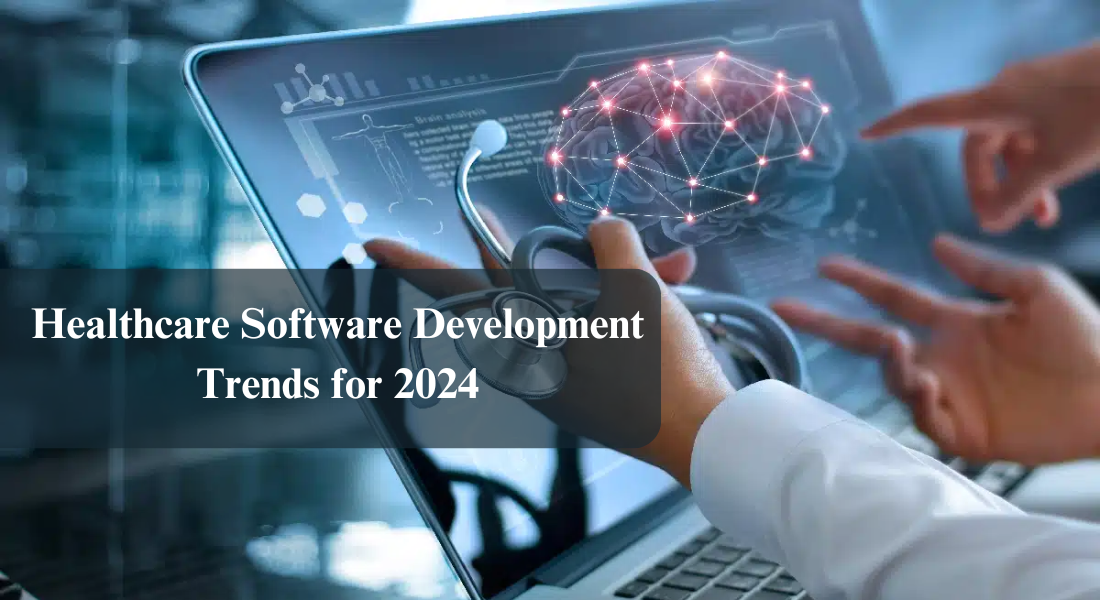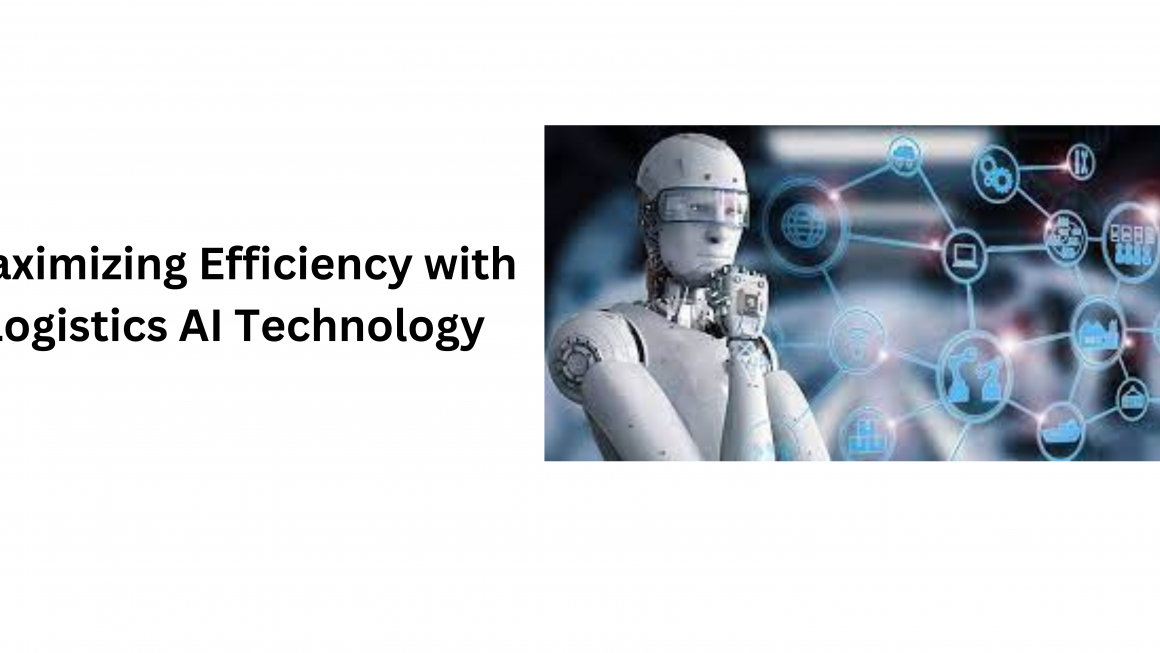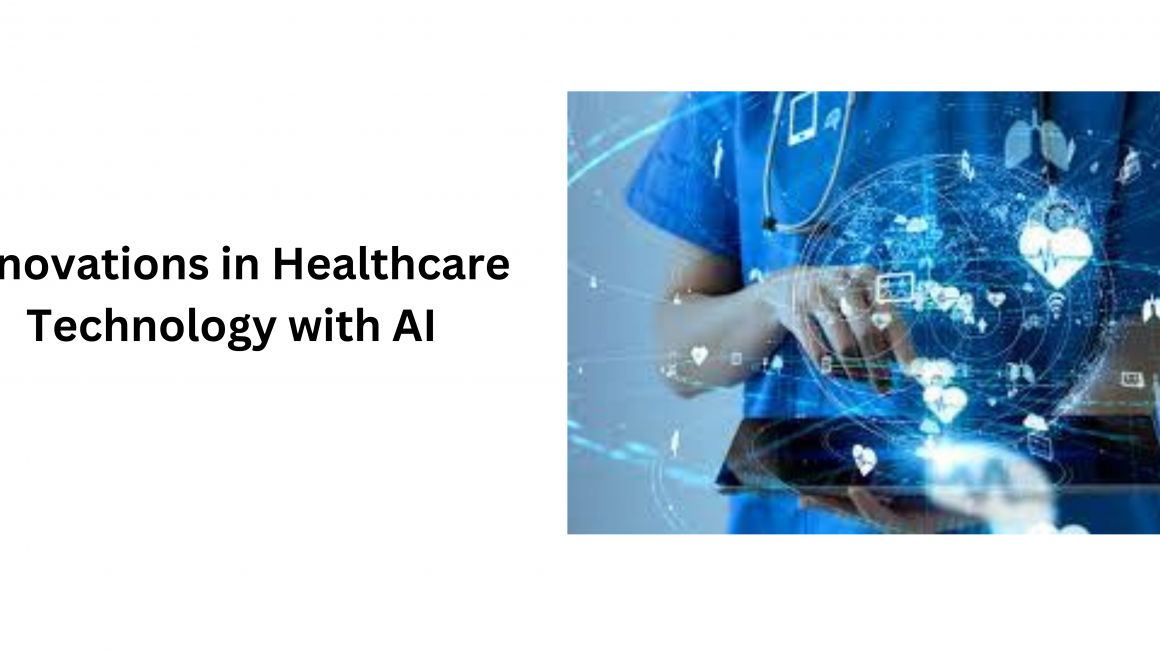The healthcare sector is experiencing an IT revolution, and solutions that came from healthcare software development are in the thick of it. New approaches are starting to appear that are revolutionizing the practices of physicians and informing how patients take charge of their wellness. When it comes to healthcare software development, there are important trends in 2024 that should be considered. Now let us introduce these trends and discuss how they enhance the process of healthcare provision.
Telemedicine Expansion
Telemedicine is a rapidly expanding modality of healthcare, especially in recent years and in the times of COVID-19. This trend is expected to continue in 2024 as well. Telemedicine solutions allow patients to access physician services without physically going through the hassle of visiting a clinic or a hospital. This is especially helpful for people who lack convenient access to doctors and other healthcare providers.
There is a need to use advanced healthcare software development tools to build sound telemedicine frameworks. These tools have to guarantee that the interaction between patients and healthcare providers is safe and uninterrupted. Furthermore, the adoption of artificial intelligence for preliminary examination and chatbots for basic information can improve the effectiveness of telemedicine.
Key Technologies Driving Telemedicine
- AI and Machine Learning: These technologies aid the determination of a condition based on information from the patient.
- Blockchain: Preserves patient confidentiality and patients’ data security.
- IoT Devices: Smartwatches track the patient’s condition and pass on essential information to doctors.
AI-Powered Diagnostics
The use of AI in diagnostics is increasing in the healthcare industry. AI systems can go through large amounts of medical data and help doctors with early diagnostics and using relevant treatment approaches. Automated diagnostic applications can understand radiology scans, analyze patients’ records, and possibly anticipate future conditions.
Healthcare software solutions based on artificial intelligence are useful for doctors as they give recommendations that can help in making a correct diagnosis. For instance, AI can find defects in the X-rays or MRI that a human being cannot see with the naked eye. This technology not only enhances the precision of tests but also accelerates the diagnostic process.
Benefits of AI in Diagnostics
- Enhanced Accuracy: Reduction of human error in the interpretation of medical data.
- Time Efficiency: Facilitates the diagnosis, hence enabling faster treatment.
- Predictive Analysis: Detects early signs of various health issues before escalating into complications.
Personalized Medicine
This refers to a medical approach where treatment options are adapted to suit individual patients about their genetics, behavior patterns, and surrounding conditions. This approach has become even more possible with the improvement in genomics and big data technologies.
Modern healthcare software solutions also consist of systems that accumulate and process patient information to design individual treatment plans. These solutions take into account aspects like genealogy, health records, and even some social parameters.
Components of Personalized Medicine
- Genomic Data Analysis: Relies on the genetic data to direct treatment.
- Data Integration Platforms: Integrate data from different platforms to get the overall picture.
- Predictive Analytics: Predicts the likely patients’ reactions to the treatments.
Interoperability and Integration
The issue of interoperability has remained one of the major challenges in healthcare. Fragments of care are a common problem owing to the lack of effective communication between systems and platforms. During the year 2024, there will be a continuation of efforts to strive for perfect integration and compatibility.
Therefore, the ‘Healthcare software development tools’ emphasize the establishment of the framework, which will enable the interfacing of various systems. This consists of certified electronic health record (EHR) connectivity which allows the health care providers to get patient information across various applications.
Importance of Interoperability
- Improved Patient Care: Makes available a patient’s information to all the healthcare providers involved in the patient’s treatment.
- Operational Efficiency: Reduction of duplication of tests or procedures.
- Data Consistency: Adheres to all patient record-keeping policies to ensure that patients’ records are complete and updated.
Cybersecurity in Healthcare
It is thus becoming even more crucial to implement adequate measures of protection against potential cyber threats. Security of patient information from cyber-crimes is among the biggest concerns for healthcare management.
The market for healthcare software solutions has expanded to cover enhanced security measures. Some of them are encryption, multi-factor authentication, and blockchain technology. Protecting patient data increases confidence and adherence to requirements put in place by regulatory authorities.
Key Cybersecurity Measures
- Encryption: Ensures the security of data being stored and also when it is being transferred from one point to the other.
- Multi-Factor Authentication: Enhances security of the system at another level.
- Blockchain: It offers an undeniably secure way of storing and accessing patient information.
Mobile Health Applications
Mobile health applications are also helping patients to take charge of their health. These applications can include general health information, appointment setting, prescription refresher, and many others.
Mobile application development is gradually becoming prominent as part of healthcare software development. These apps are therefore easy to use to encompass all levels of society and patients of all ages.
Features of Mobile Health Apps
- Health Tracking: Supervises patients’ vital signs and physical movements.
- Medication Management: Reminds the patients when they should take their medications.
- Telehealth Integration: Links patients to healthcare service providers.
Big Data and Analytics
Analytics in particular have been revolutionizing the healthcare industry by offering significant information about patients, hospitals, and diseases. Healthcare providers can thus make constructive decisions that have positive impacts on the patients by evaluating large datasets.
The use of data analytics in healthcare software solutions development has now become quite widespread. These solutions can accept data from different sources and generate meaningful statistics for healthcare providers.
Applications of Big Data in Healthcare
- Predictive Analytics: Predicts disease incidences and patient prognoses.
- Operational Efficiency: Enhances the coordination and management of human, material, and financial resources in a hospital.
- Personalized Treatment: Use of data analysis in developing tailor’s treatment plans.
Blockchain for Health Records
Health records can benefit from blockchain technology for its efficiency and safety. With the creation of an unalterable record, blockchain maintains the privacy and security of patient information.
Blockchain is now being integrated into healthcare software development to improve the aspect of integrity and security. This technology makes it possible to have accurate records of patients and keeps the records concealed from unauthorized persons.
Advantages of Blockchain
- Security: Ensures that the data cannot be manipulated or accessed by third parties who are not permitted to do so.
- Transparency: Ensures that there is always a record of who and when accessed particular data and when certain changes were made.
- Interoperability: Enables the flow of data from one platform to another without interference.
Cloud Computing in Healthcare
Cloud computing is greatly benefiting the healthcare industry by offering flexible and relatively cheap solutions. Some advantages of cloud-based healthcare software solutions include; data storage, remote data access, and availability of collaborative platforms.
Healthcare software development tools can now be integrated with cloud computing technologies. This makes it possible for healthcare providers to interface with the patient database from any location, communicate with peers, and optimize functions.
Benefits of Cloud Computing
- Scalability: According to the study, it flexibly allocates resources depending on demand.
- Cost-Effectiveness: It helps to minimize on-premise prerequisites.
- Collaboration: Coordinates and supports information exchange between different caregivers.
3D Printing in Medicine
3D printing is being applied in the production of body appendages and organs, and even limb and organ implants. This technology means that patients are provided with medical solutions that meet their health requirements.
Healthcare software solutions include elements of designing and manufacturing medical products using 3D printers. These solutions help to ensure that printed items are fit to serve their intended functions and purposes.
Uses of 3D Printing
- Custom Prosthetics: Designs and fabricates prosthetics for each person who needs them.
- Implants: Creates implants that match perfectly with the bone.
- Tissue Engineering: Specializes in the growth of organs and tissues to be used in transplants.
Virtual and Augmented Reality
Virtual Reality and Augmented Reality are capable of revolutionizing healthcare education, diagnosis, and treatment. These technologies provide new possibilities for understanding and interpreting medical information.
The tools used to develop software in the healthcare sector are crucial in designing VR and AR solutions. These tools ensure that health applications are useful, easy to use, and helpful to both the healthcare givers and the patients.
Applications of VR and AR
- Medical Training: This is useful in offering real-life scenarios because of training.
- Patient Care: plays a crucial role in pain management and physical therapy.
- Diagnostics: Helps to imagine diseases that are deemed difficult to understand.
The Future of Healthcare Software Development
The future looks promising for healthcare software development as it can improve patient care even more.
- Blockchain Technology: Blockchain, which has provided a high level of data security, can be utilized to generate an immutable timeline of the patient’s health status that can be viewed only by relevant healthcare practitioners.
- Genomics and Personalized Medicine: With the progressing development of genetics knowledge, healthcare software development may establish technologies that would prescribe individual methods of treatment depending on a patient’s genes.
- Focus on Patient Engagement: New healthcare software solutions will also focus on increasing patient engagement and involve patients in the process of their health management. This could encompass features in the area of medication, scheduling of appointments, and tracking systems for chronic diseases among others.
Conclusion
Healthcare has promising prospects ahead, with several technological innovations impacting the delivery of patient services, healthcare facility functional capacity, and global health. Therefore, when transitioning to 2024, these trends in the healthcare software development industry remain valid. From diagnostics using artificial intelligence to telemedicine, each trend emphasizes the role of advanced healthcare software solutions.
Tools and techniques of healthcare software development are also in the lead of this transformation and help to create sophisticated healthcare software. Such solutions are not only improving the quality of patients’ treatment but also providing the necessary protection of the data and optimization of operations, as well as an individualized approach.
To maintain a competitive advantage in this rapidly progressing domain, healthcare organizations should adapt to the identified trends and aim to create new healthcare software solutions. By so doing them can meet patient’s demands, enhance productivity, and shape the future of the healthcare sector.




